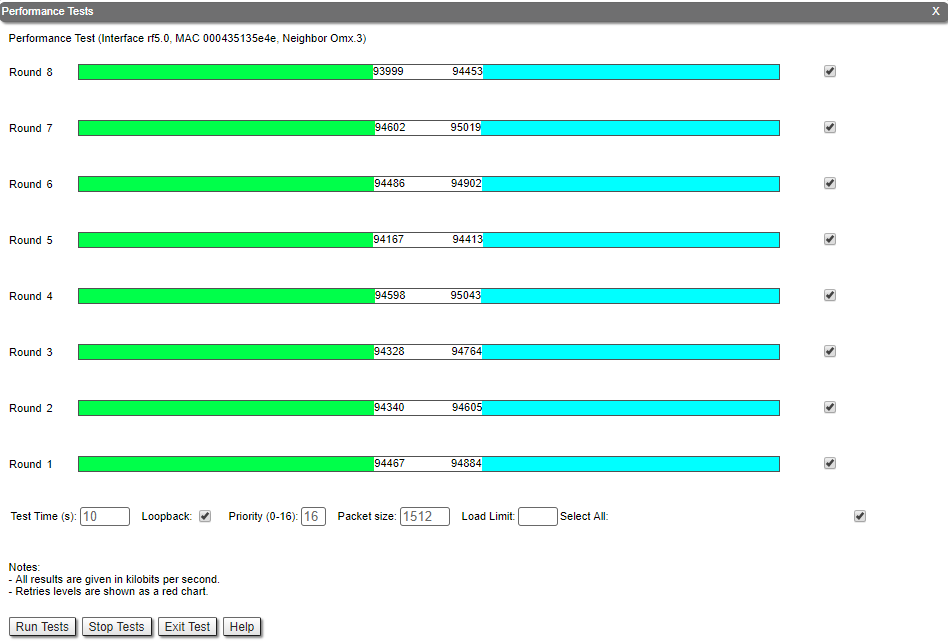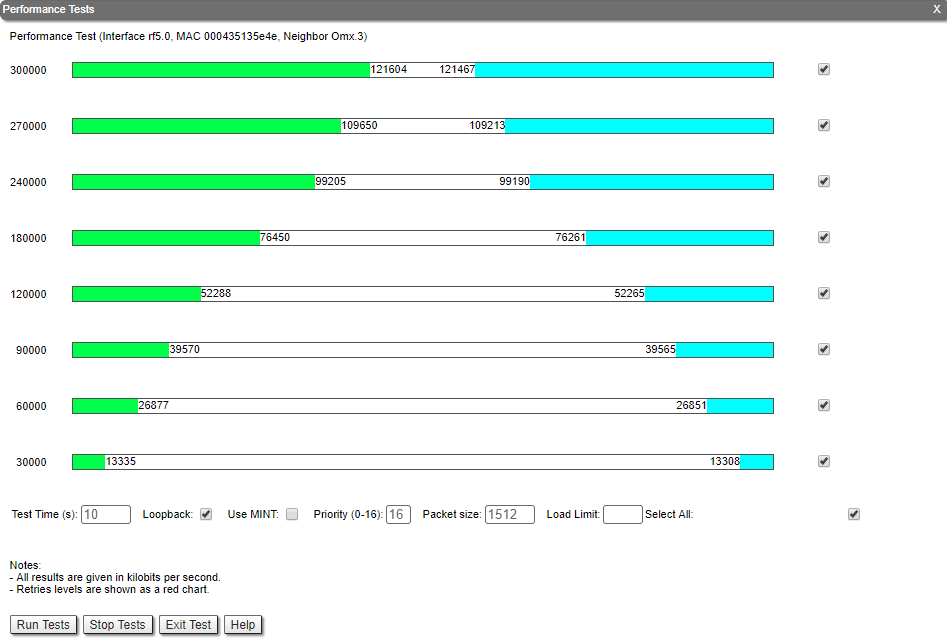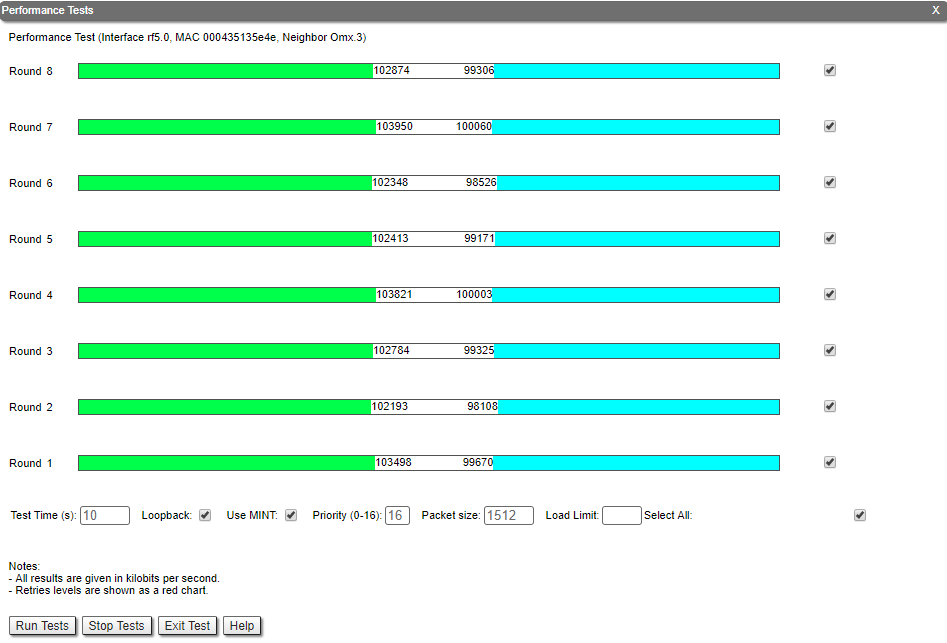...
| Center | |||||
|---|---|---|---|---|---|
|
| Center | |||||
|---|---|---|---|---|---|
|
| Center | |||||
|---|---|---|---|---|---|
|
By clicking the «Run Tests»/«Stop Tests» buttons at the bottom of the page, you can start/stop the performance tests.
...
- “Test time” parameter - allows setting the duration (in seconds) of the test for each bitrate (5s by default).
- “Bidirectional” check-box - allows choosing between bi-directional (when checked) and unidirectional (when unchecked) performance test.
- "Use MINT" check-box - performs 8 tests on established bitrate.
- "Priority (0-16)" - By by default, it is 16, which is lower than the data traffic that has priority 15. You can increase the test priority by setting a lower value.
- "Packet size" - allows to set the desired packet size in bytes.
- "Load limit" - sets a limit on the data rate at which the test runs, in Kbps.
The bitrates list on the "Performance test" tool consists of the bitrates that correspond to the channel bandwidth set on the unit (5/10/20/40MHz). To perform the tests for the bitrates related to the other channel bandwidth, you need to reconfigure the channel bandwidth (the “Channel Width” parameter in the "Radio Setting" section of the "Basic Settings" page) on both units within the tested link.
...
- It is recommended to start antenna alignment with searching the maximum signal level on a minimal possible bitrate. Afterwards, automatic MINT mechanisms will set the most appropriate bitrate when “Autobitrate” mode is enabled
- Input signal level should be between 12dB and 50dB. It is recommended that ATPC to be disabled
- If signal level is more than 50dB, it is recommended to lower the amplifier power
- If maximal signal level is less than 12, it is recommended to lower the channel width (for example: from 20MHz to 10MHz)
- In some cases, a signal level that is less than 12 may be enough for the radio link operation. In this case, you should be guided by parameters such as the number of retries and Error Vector Magnitude. If the number of retries is low (close to “0”) and EVM is more than 21 (Input Signal stripe is green) then the radio link is most likely, operating properly
- Retries value should be zero or as low as possible (less than 5%10%)
- The top of an Input Signal stripe should be located in the black area
- The signal quality should be good: EVM value should be more than 21
- Input signals of the two antennas of the device should have similar Cross fading values (Input Signal stripes should be symmetrically to the value of 0dB).
...





